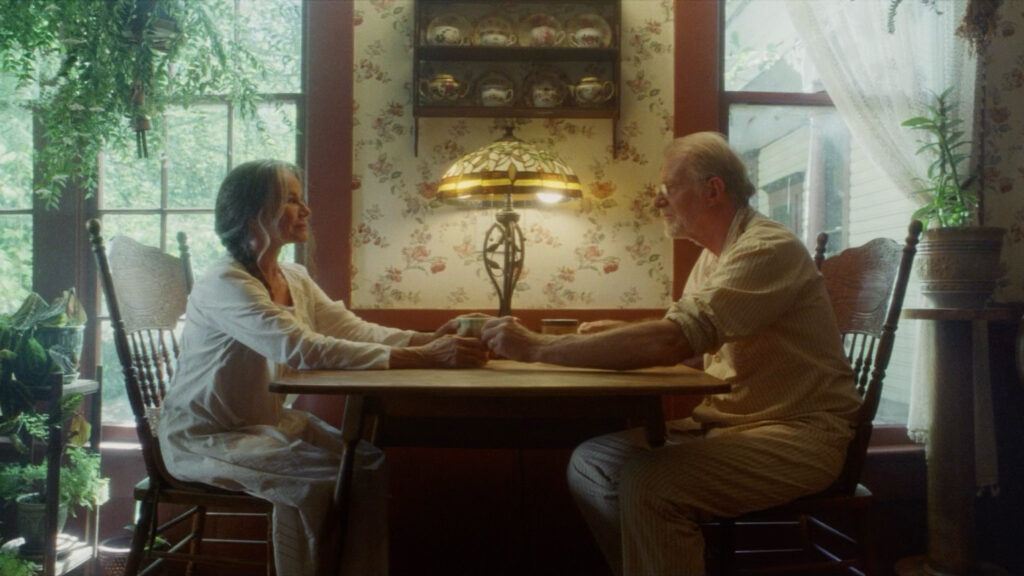Those Familiar With the ‘Loud Quiet Loud’ of the Pixies Will Feel Its Influence in a New Thriller, ‘Strange Darling’
Director J.T. Mollner cites the group’s signature methodology as a factor in crafting ‘Strange Darling’ — that is to say, abruptly juxtaposing the abrasive and the tender, the overbearing and the intimate.

The cross pollination of mediums that occurs when an artist crafts an object — whether it be a book, film, poem, or painting — is an inevitable phenomenon. Creative types absorb inspiration from all around: filmmakers from painting, musicians from sculpture, poets from dance, like that. Art is nothing if it doesn’t embody aims and inclinations that stem from outside its immediate purview.
How these influences manifest themselves in a given piece depends on the similarities and discrepancies of this-or-that medium. A Russian abstractionist, Wassily Kandinsky, famously likened painting to music: “Color is the keyboard, the eyes are the harmonies, the soul is the piano with many strings. The artist is the hand that plays, touching one key or another, to cause vibrations in the soul.”
A romantic type, our Wassily, and prone to otherworldly portents. Writer and director J.T. Mollner is more down-to-earth or, at least, more visceral in his leanings. His new thriller, “Strange Darling,” grabs viewers by their lapels and shakes them up but good. Reading the accompanying press materials, we learn that a primary influence in shaping the picture’s cinematic tensions is musical: the songs of a seminal alternative rock band, the Pixies.
Mr. Mollner cites the group’s signature methodology of “loud quiet loud” as a factor in crafting “Strange Darling” — that is to say, abruptly juxtaposing the abrasive and the tender, the overbearing and the intimate.

Makes a kind of sense, particularly if you consider the types of cinema favored by Mr. Mollner’s mother and those preferred by his Aunt Dede. Mom disallowed young J.T. from attending any picture that came tagged with an “R” rating: Her tastes were mild and mainstream. Aunt Dede was more fun because the movies she encouraged were illicit: foreign films by the likes of Bergman, Fellini, and Parajanov. “Loud quiet loud” comes in many varieties.
Structurally, “Strange Darling” errs on the side of the arthouse; thematically, the grindhouse. The film begins with a young blonde woman — she’s only known to us as “The Lady” (Willa Fitzgerald) — running through a grassy field. From the looks of it, she’s been put through the wringer. An introductory text informs us that “the most prolific and unique serial killer of the 21st century went on a calculated, multi-state spree.” Another serial killer movie? Oh, please.
Yes, another serial killer movie, albeit one that’s had its trajectory cut-and-pasted out of chronological order. The first intertitle tells us that the picture has been “shot entirely on 35 mm film.” Good to know. The prologue that follows is noirish in tone — filmed in black-and-white, of course — and contains threatening snippets of “The Demon” (Kyle Gallner). He smokes, he leers, he throttles, and we’re barely into a story that will be told in six installments, the first of which is — yes, really — “Chapter 3.”
Being art house-inclined, Mr. Mollner doesn’t stint on egregious self-aware tics — most notably, having composer Craig DeLeon and editor Christopher Robin Bell brazenly milk the “loud quiet loud” dynamic. Being grindhouse-inclined, Mr. Mollner keeps the picture moving, interrupting the flow only to provide plot twists that end up increasing its velocity.
What emerges is less a movie than an exercise in cinematic form — which is to say, a picture that favors skill over profundity. A strange one, this “Strange Darling,” and a lively diversion for those willing to sample its wares.

